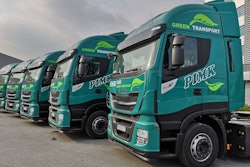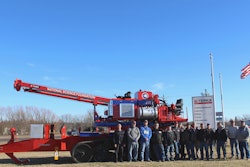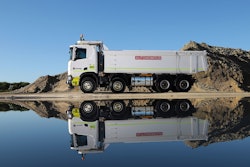
The rise of the Internet of Things (IoT) has opened up new business opportunities for prognostics by enabling its use across a range of assets in the commercial truck market. Truck original equipment manufacturers (OEMs), Tier 1 suppliers and telematics vendors will be among the early adopters of prognostics solutions, followed by analytics companies. Truck OEMs are increasingly applying predictive analytics in equipment maintenance and asset management, and have also been encouraging fleet owners to adopt them by educating them on the operational expenditure benefits of predictive maintenance. With the introduction of autonomy and platooning, there is a need, more than ever, for advanced diagnostics.
"The trucking market is showing a keenness to integrate remote/prognostics data with maintenance management systems, parts inventories, warranty management, over-the-air (OTA) updates, dealership optimization and recalls," say Sailesh Mohan, Senior Research Analyst, Mobility. "In due course, the trucking market will move from preventive maintenance to data-driven cognitive predictive maintenance, powered by advances in Big Data and IoT."
Frost & Sullivan's recent analysis, "Prognostics and Its Implication in NA and EU Commercial Vehicle Telematics, Forecast to 2025", discusses the effects of prognostics and use cases for stakeholders such as OEMs, tier 1 suppliers, and telematics providers. It analyses the current status of stakeholders' telematics-based CV diagnostics solutions in North America and Europe.
"Data-driven prognostics systems require multiple sensors to be truly effective. Truck OEMs can address this challenge by implementing dedicated sensors in a cost-effective manner," notes Mohan. "Multi-brand prognostics solutions priced in the range of $12 to $15/truck/month will encourage fleet owners to implement the solution."
Following the surge in demand for their solutions, prognostics OEMs are forming strategic alliances with key ecosystem members like analytics companies and telcos to improve data analytics capabilities as well as data quality and quantity. Other trends that will expand growth opportunities include:
- Development of OTA update capabilities for efficient diagnosis of autonomous trucks in the future.
- Advancement of prognostics technology and business models.
- Truck and tire manufacturers commercializing their entry-level prognostics solutions, starting with emission and tire-based prognostics, respectively. This will be followed by prognostics for battery with the advent of electrification.
- Application of predictive analytics in routing and scheduling, navigation, and driver behaviour monitoring.
- Packaging prognostics solutions into different tiers and price points.
- The rise of hybrid models as the most common and accurate method for predicting failure. Components are rarely monitored solely by model-, experience-based, or data-driven approaches.
"Prognostics and Its Implication in NA and EU Commercial Vehicle Telematics, Forecast to 2025" is part of Frost & Sullivan's global Automotive & Transportation Growth Partnership Service program.














![Hcm Ax Landcros Press Release[32] jpg](https://img.oemoffhighway.com/mindful/acbm/workspaces/default/uploads/2025/11/hcmaxlandcros-press-release32jpg.mAEgsolr89.jpg?ar=16%3A9&auto=format%2Ccompress&fit=crop&h=135&q=70&w=240)




